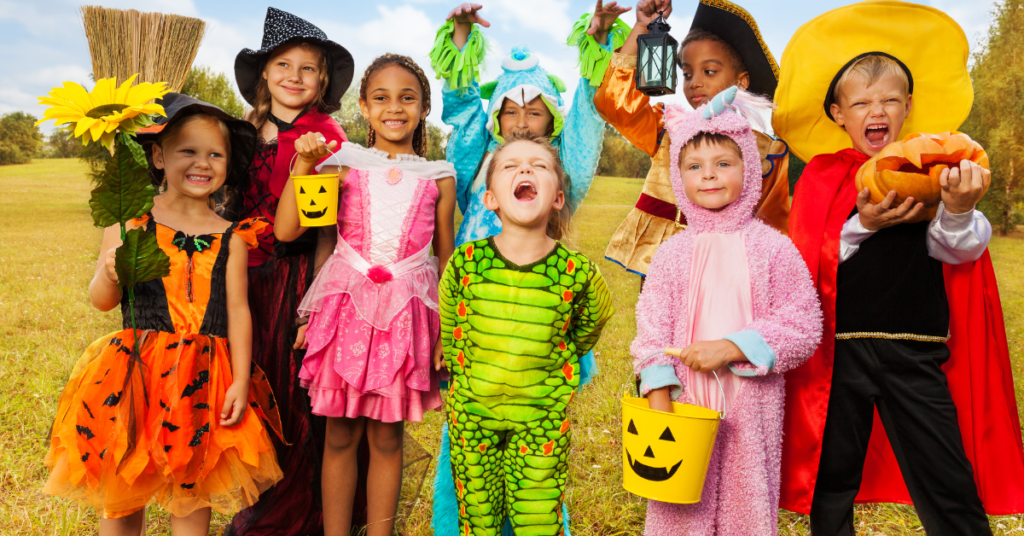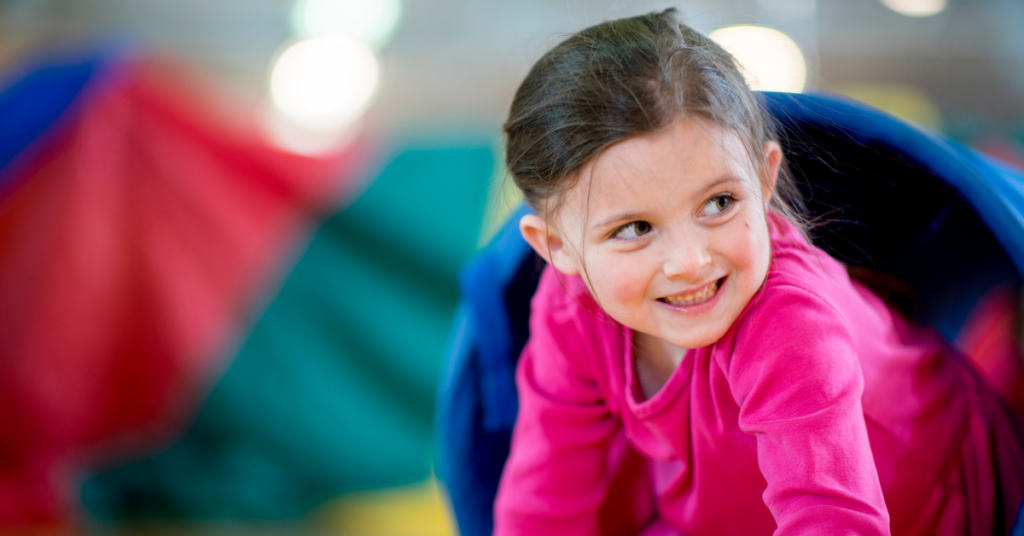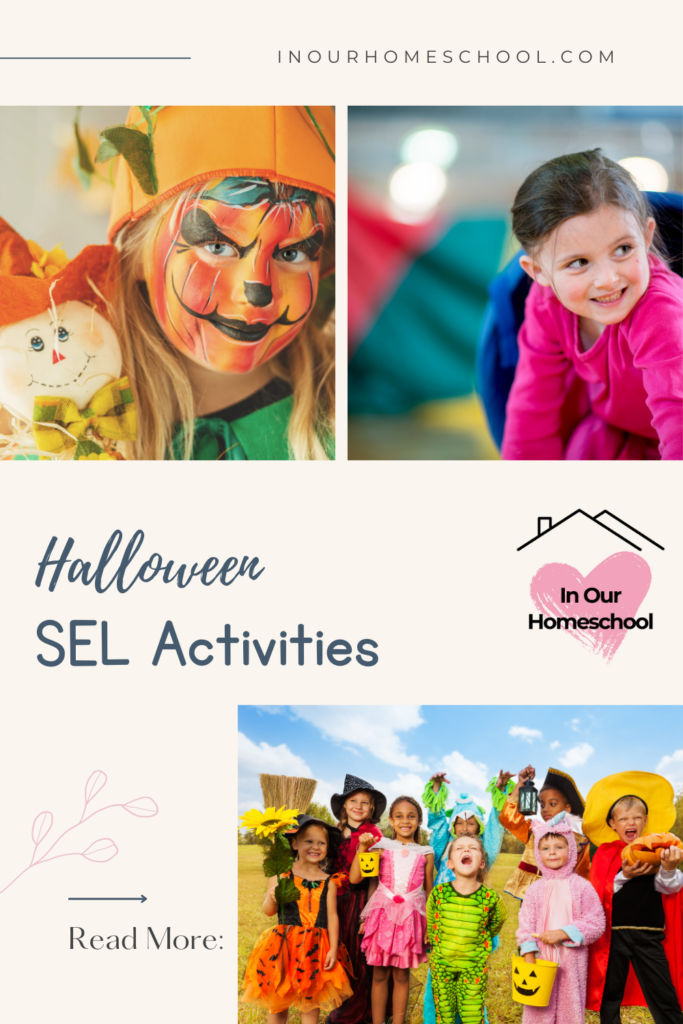Halloween is coming… and I have to tell you something that can be difficult. Although my daughter loves the holiday, I do not like Halloween. (Note: this is a reflection on Halloween as it is typically celebrated, not on the Catholic origins of the Feast of All Saints). I like the pretty costumes, and you can’t go wrong with some chocolate and peanut butter or chocolate and caramel treats, but I’m not so into the tricks and horror that often surrounds the day, even in materials that are created for kids. This year, I’m planning to add in some social and emotional learning (SEL) opportunities for Halloween so that my kids are learning, not just experiencing a sugar high while they get scared. I’ll share a few Halloween SEL activities here in case you’re interested in doing the same:
Recognizing Emotions: Pumpkin Carving and Face Painting
I don’t know about you, but I do not have a poker face. If I’m feeling something, you can see it in my reactions and responses and it’s written all over my face. Luckily, this is usually the case with children too. Part of SEL is learning to recognize emotions, only whereas you and I have experience with this, kids are just getting started and need to be taught.
When pumpkin carving (or painting), you can start with a template or create something from scratch. In either situation, you can discuss what emotion you want to give your pumpkin and each give examples of how that might look. When it’s your turn, you can over-exaggerate and make your kids laugh at how ridiculous you look so they can do the same on their turn—laughing and having fun will help them remember. Talk about what your face is doing and focus on the features that you can add to your pumpkin. You can also try googling to find templates for your pumpkin face and talk about what emotions they’re showing.
You can do the same thing if you’re putting makeup or face paint on yourself or your children for your costumes. What emotion do you want people to see when they look at you? Happy? Sad? Angry? Joyful? You can search for clown faces online if you really want to see over-exaggeration of emotions.

Empathy: Costumes
One of the biggest aspects of Halloween as we celebrate it today is that everyone gets dressed up in costumes and pretends to be someone or something that they’re not. This is the ultimate time to practice social awareness and empathy! Ask your child about their costume. For example, my daughter has an Elsa costume. I can ask her:
- Why do you want to dress up like Elsa?
- What do you like about her?
- Is there anything you don’t like about her?
- Elsa is the queen of Arendelle. How do you think it feels to be a queen?
- How would you act if you were queen? Can you show me? (Try to help your child stay in character for as long as you want for them to experience what it’s like to be someone else, the good, the bad, the easy, and the difficult.)
- How did it feel to be Queen Elsa?
- What did you like best about being the queen? What didn’t you like?
- What are some good things about Elsa that you could try to incorporate into your life?
- I’m so happy that you’re you and that you can empathize with other people!
Trick or Treating with Kindness
Now that your kids are dressed up and ready to go, set them up with a kindness challenge! Although many kindness challenges will give specific steps to complete, this one is all about teaching your children to be naturally observant and kind. You should share ideas of ways to be kind before you go out, but also be prepared to give them guidance while you’re out. Whether you’re going door to door or trunk to trunk, it doesn’t hurt to be kind.
For older siblings of any age, or kids that are a little older and have experience trick or treating, they can help younger kids or siblings understand the ropes. They can hold a sibling’s hand, show them how to ring a doorbell or knock on a door then stand back and wait patiently. After encouraging a quiet child to say “trick or treat,” the older children can model being polite and respectful to those handing out candy, and reminding the younger children to always say “thank you.”
All kids can be encouraged to compliment others on their costumes, and reminded to thank anyone who compliments them graciously. If you notice someone that seems nervous or doesn’t have any candy in their bag or bucket yet, you can encourage your child to offer to share some of their candy. Although different bucket colors can indicate different things (autism, food allergies, etc), oftentimes they’ll just represent the child’s favorite color. You can share the symbolism of the colors with your kids to raise awareness and help them better understand things, but it’s best to teach your child to be kind to everyone.
Empathy and Coping: Getting Scared
There are plenty of scary things that are considered normal at Halloween. I, for one, could really do without all of the cobwebs and spider decorations… yecht! And a friend of mine said she’d block anyone who posted pictures of snakes on Facebook. But since “scary” Halloween decorations are considered normal, a lot of people don’t consider how others may feel. This is another opportunity to teach empathy and phobias. The other day, I was reading a picture book to my kids and within seconds of me turning a page, my daughter had covered the corner that had a drawing of a spider so I wouldn’t see it. She recognizes my fear and she tries to help me.
Another thing you can do is think about what might be scary about a haunted house (getting trapped in a maze, hearing a loud noise, being chased) and talk about ways to cope. Note: aside from the loud noise which should be less scary for most children, ask your kids to come up with the scary things if you do this. If they’ve never thought about being chased or trapped, you don’t want to make them start worrying. Once you have one, or a few, scary things to work with, talk about coping strategies. Would deep breathing help them calm down? Can they ask for help? What would you do in the situation that they can learn from?

A Haunted House for Teamwork
My daughter loves to play Roblox and she is seriously good at completing each obby (obstacle course). She loves it so much that every day she tells me about the obby she’s doing in our house… and her toddler brother attempts to follow her and do them, too! Instead of taking my (way too young) kids to a (way too scary) haunted house like I mentioned above, we can make a not so scary one in our home.
Grab some helium balloons and pillowcases and you have ghosts for the kids to avoid—make them zig-zag around them or find the special marked “opening” before they can go through. Add anything you use when you play “the floor is lava,” but add a string between two kids (or you and your kid) so they have to help each other across instead of racing. You can put some painter’s tape on the floor in parallel lines so they have to walk next to each other on balance beams. Come up with your own fun ideas, change the order of activities, give a prize for completion, but make sure they have to complete it as a team to win!
Halloween SEL Activities
Just because Halloween can be scary doesn’t mean it has to be. Take the time to have fun and learn with your kids. The opportunities for social and emotional learning, especially social awareness, abound at Halloween. Happy haunting!
Click here for more about social and emotional learning and how to incorporate it into your homeschool. Thank you for joining us today In Our Homeschool.

Disclosure: As an Amazon Associate I earn from qualifying purchases. This post may include affiliate links which means I may earn commissions for purchases made while using my link.




